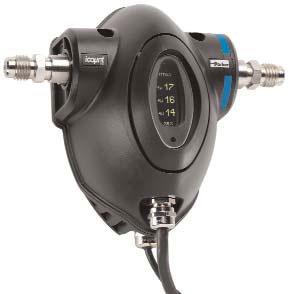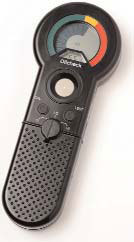The contamination of hydraulic oils and hydrocarbon fuels as a result of moisture and particles is a huge problem in many industrial sectors.
Regular checks are crucial in preventing contamination, but many traditional tests, such as visual inspection, are no longer up to scratch.
The simplest check used is the Clear and Bright (C&B) test for hydrocarbon fuels - also known as the White Bucket test. This technique essentially involves an operator taking a sample of the fuel to be tested and observing it. If they are able to see any solid particles, or the fuel is hazy when held up to the light, the fuel fails the test. Although this test gives an indication of contamination, it suffers from a number of limitations.

The test is highly subjective; the eyesight of the person looking at the sample, the light conditions at the time and the type of container in which the sample is held can all have an impact on the results. This is because the human eye is only capable of seeing objects of 30-40µ in size or larger; under normal circumstances, these relatively large particles will drop out of suspension.
Also, if the sample bottle used has not been cleaned, it can lead to the introduction of contaminated matter. During the process, the bottle is held directly under the sample point tap, which is opened and then closed once the bottle has been filled. This means that any dirt from the tap itself is washed into the sample, once again invalidating the results of the test.
The Gravimetric test is only capable of producing results with limited accuracy and repeatability
Another method of testing, which can be applied to both fuels and hydraulic fluids, is called the Gravimetric test method. This requires an operator to draw a sample of fuel through a filter pad consisting of two layers. The first is the working layer, which captures the dirt, and the second is a control layer used as a datum when measuring the solids loading. The filter pad is then taken to a laboratory where it is dried and the two membranes separated. The difference between the two is the amount of contamination in the fuel, expressed as milligrams per litre (mg/ltr).

This test, while more scientific in its nature, is only capable of producing results with limited accuracy and repeatability. The time taken to analyse the sample makes it impossible to delay operations if contamination is found in the fuel. The test is usually taken once every six months and still requires laboratory time, typically between 24 and 48 hours, to produce a result.
Gravimetric analysis reports the contamination per millilitre (ml) but not the number of particles collected, and, as such, provides little insight as to the actual condition of the fuel. For example, a sample membrane may have one large particle or thousands of small particles, both with the same mass. The small particles are far more damaging to fuel systems, but with the current method there is no way of discerning the size of the particle contamination or any subsequent gravimetric distribution.
No allowance is made for this type of contamination in the system. Even if the number of particles on the membrane is known, potentially through microscopy techniques, the results can vary greatly unless the type of contamination can be determined and therefore its density recorded.
For instance, 1,000 particles of 10µm (c) of iron oxide will weigh almost four times that of 1,000 particles of 10µm (c) silica. In this respect, the measurement of particulate as a mass expressed in mg/ml tells the operator very little of use.
Lightweight, portable particle counters give an early warning of an impending system failure
While these simple tests have been used to monitor fuels for contamination in the past, they can provide inaccurate and unreliable results. Condition-monitoring technology, however, is moving on and now has the potential to offer a far more effective solution at realistic cost. For example, automatic particle counters are capable of highly accurate and repeatable results in the field.

Portable particle counters have also become increasingly important instruments. Developed to allow the rapid, onsite identification of a change in oil conditions brought about by the ingress of water, particle contamination, metallic content or oxidation, this is now the accepted method of monitoring levels of solids in fluid systems.
Capable of accurately and repeatedly reporting levels of particulates down to 4µm(c) in size, these lightweight, mobile instruments provide an early warning of an impending system failure and, as a result, increase the operating life of machinery.
Devices such as Parker’s icount online and portable particle detectors and analysers use laser-based technologies for ultra-high-precision particle detection. Typically, as an oil sample is drawn into the instrument, it passes through a precisely targeted light beam aimed at integrated photo-diode sensing cells. As particles pass by the photo-diode sampling point, the reduction in light intensity transmitted is proportional to particle size. The test cycle usually takes around two minutes.
The issue of fuel contamination is relevant across a variety of applications within industries ranging from automotive to power generation.
Thanks to the introduction of the latest generation of condition-monitoring technologies, this once laborious task can now be carried out extremely effectively to deliver consistently fast, reliable, repeatable and reproducible data online, rather than in the laboratory, leading to significant improvements in efficiencies.




Nanogenerator consumes CO2 to generate electricity
Whoopee, they've solved how to keep a light on but not a lot else.